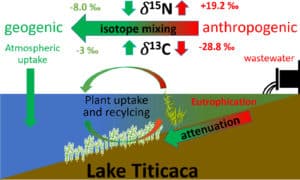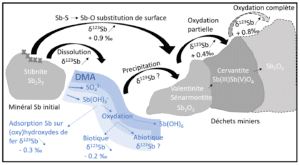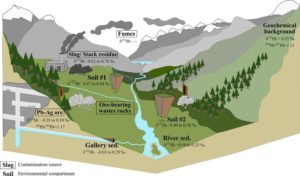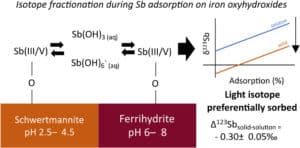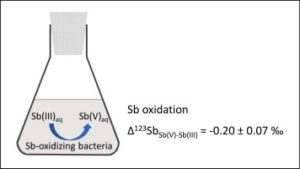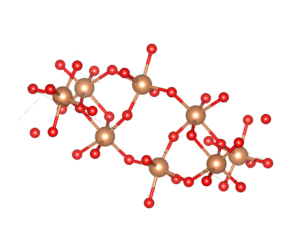Abstract
Antimony (Sb) is an emerging priority pollutant in the environment and a potentially carcinogenic
element. The general objective of this thesis is to contribute to exploring the potential of stable
isotopes of antimony (121Sb/123Sb) to trace sources and processes in aquatic environments and especially downstream from mining sites. After development and validation of a new method for the separation and analysis of antimony isotopes, the isotopic fractionations associated to different biogeochemical processes were studied by a theoretical approach, an experimental approach, as well as a field study conducted on the hydrosystems downstream from the acid mine drainage of the San José mine in Oruro (Bolivia). The direction and amplitude of these fractionations have been characterized in order to interpret the δ123Sb signatures in the environment. Theoretical studies have highlighted the main processes fractionating antimony isotopes: the partial or total oxidation of Sb(III) in minerals (Δ123 Sb V-III from +0.4 to +1.2 ‰), the change of the nearest neighbor of antimony (Δ123SbSb-O – Sb-S ≈ +0.9 ‰), and finally, the distortion of the atomic polyhedron Sb – O and Sb – S (Δ123Sbdistordu-symmetrical ≈ -0.3 ‰). Experimental studies have shown a preferential adsorption of light isotopes on iron oxyhydroxides (Δ123Sbadsorbed-dissolved ≈ -0.3 ‰), an enrichment in light isotopes in Sb(V)aq (Δ123SbSb(V)-Sb(III) ≈ -0.2 ‰) during the microbiological oxidation of Sb(III)aq, and a lack of fractionation during chemical oxidation with H2O2. The field study showed a decrease in δ123Sb from +0.42 to +0.70 ‰ downstream from the AMD of San José, in relation with the natural attenuation of antimony by sorption on iron minerals, and highlighted seasonal variations of δ123 Sb in the waters of Lake Uru-Uru, from +0.28‰ to +0.55‰, attributed to a variable contribution of the AMD and the river draining the Vinto smelter.
Taken together, the results support the potential of antimony isotopes as tracers of sources and
processes in aquatic environments, particularly in mining and industrial areas, and suggest the need for further research in order to characterize other important processes and to better understand the origin of the observed fractionations.
PhD thesis
PhD thesis defended by Colin Ferrari on December 6th, 2022 in the University of Montpellier.
Download the full thesis on the button bellow.


